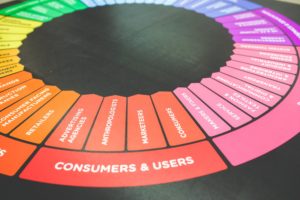Deliver the most impactful message to drive traffic, convert sales, and build customer loyalty
The most effective marketing strategies deliver the right message to the right audience in the right place at the right time to drive traffic, build relationships, convert sales, and build customer loyalty.
Understanding your customer lifecycle stages can help target content and deliver a personalized shopping experience to your prospects and customers.

In this article, we’ll look at the different customer lifecycle stages and how you can optimize your shopping experience:
Define your customer lifecycle stages
The first step is to review your buyer’s journey and define the various lifecycle stages, which may vary slightly depending on your industry and business model. In general, all customers go through the following: the awareness stage, the consideration stage, the decision stage, and the retention stage.

Apply personalization to customer lifecycle stages
Using a marketing personalization strategy, you can deliver the most relevant content and offers to each customer based on their lifecycle stages:
Awareness stage
Prospects at this stage are searching for a solution to their challenges and may not yet know about your brand.
Based on their browsing behaviors, such as clicking through to your website while performing a search on a particular keyword or reading a few articles on a particular topic on your website, you can recommend more relevant content to build trust and establish brand awareness.
You can also entice visitors to sign up for a lead magnet so that you can capture their information and build a 360-degree customer profile, which will allow you to further understand their preferences, behaviors, and needs for future personalized interactions.
Consideration stage
At the consideration stage, prospects are evaluating the different solution categories for their problems.
You can personalize the website experience to focus on content designed for this stage, such as by providing the pros and cons of each solution category.
They’re also likely to be on your email list, so you can send them personalized emails with links to such content or create a custom audience for your social media ads to promote these links.
Decision/purchase stage
Your prospects have decided on a solution category and they’re deciding who to purchase from.
They have probably visited your website a few times, viewed the sales pages, and researched about your products or services.
Send personalized emails or recommend website content designed for this stage. For instance, you could make use of demo videos, case studies, and testimonials.
You can send cart abandonment emails and include a special offer to entice them to take action.
Leverage pre-sale support, such as live chat, messenger app, or searchable knowledge base, to answer questions, address objections, and deliver a personalized customer experience that will help increase conversion.
Retention/advocacy stage
After your customers have made the purchase, continue to offer a personalized experience to build loyalty, entice them to make recurring purchases, and tell others about your products or services.
You can send personalized emails to share customer-exclusive content, perhaps an email on the different ways of using the products they have purchased, or recommendations and special offers on related and relevant products.
You can also personalize post-sale support by associating customers’ profiles to the products they have purchased so that you can direct them to the most appropriate resources when they log onto their accounts or get in touch with your customer service department.
Customer database: the foundation of effective personalization
A robust customer database is the foundation of an effective personalized experience appropriate for each stage of the customer’s journey.
Our data management platform (DMP) allows you to centralize your omnichannel customer data and organize the information in real-time so you can deliver the most relevant content to your prospects and customers based on their latest interactions with your brand without missing a beat.



